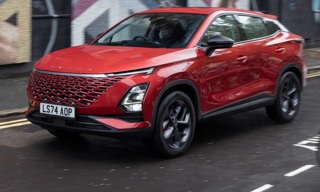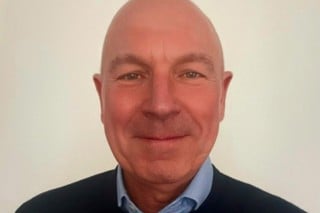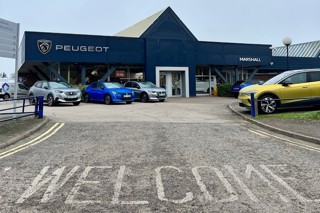Marshall Motor Group continues on its acquisition trail, but of equal importance to chief executive Daksh Gupta are the controls and processes in place at the group to meet the challenges and maximise the opportunities, including the development of the company’s rapidly increasing staff.
Jeremy Bennett: What are your strategic plans?
Daksh Gupta: Our strategic imperatives are around optimising the performance of our existing core businesses with a focus on customer service, our people, brand partnerships and operational excellence. The second part is the acquisition side, which is about balancing our brand portfolio and part of that is about keeping good pace with the market. Also it’s about optimising our cash management around work and people issues. It’s a case of building on reputation for values in business.
JB: What are the headline numbers?
DG: Our operating profit went backwards, from £10.2 million to £6.9m on a like-for-like basis on a turnover of more than £700m. In 2010 we achieved £581m turnover, and we made £9.9m operating profit. But within that we took some exceptional hits, part of which was £1.6m related to acquired sites, business restructuring and divesting of businesses.
JB: When you buy an underperforming business there’s a price that you pay because it’s failing. It costs you to drag it up.
DG: This year we’ll break even on the new businesses. Next year we’ll make half a million and the year after that a million on them as the impact of our turnaround policy is felt.
JB: What were the other reasons for the fall in profits?
DG: We are heavily concentrated with a number of Japanese brands (Marshalls is Honda’s biggest partner with seven franchised outlets) and the tsunami had a comparatively worse effect on our portfolio compared to groups with less representation of Japanese brands. The good news is we did outperform the 19% national decrease as we were down only 12%. But if you take 12% out of a £700m business it’s going to hurt.
Aftersales
DG: One of the challenges we face is that since our volumes were down last year we’re not going to see those customers this year for servicing, so there’s a whole host of stuff that we need to do to make sure that we’re maximising every aftersales opportunity.
JB: What are you going to do to improve your absorption rate of 72% in extremely challenging conditions?
DG: We’re concentrating on everything around aftersales mar-keting, making sure we’ve got the right resource in terms of divisional help. We’re recruiting two divisional aftersales guys and plan to increase this to five.They’re effectively a resource employed by the group or by each division to support the service managers, helping them drive the performance.
One of the things we do is track electronic vehicle health check activity on a weekly basis. Had we not done this I don’t think we’d have achieved 72% absorption. We were in the 80s, but clearly the decline in retail volumes has hit that.
Marshall’s brand portfolio
JB: You’ve added Kia, Mercedes-Benz and boosted your representation with Honda and Jaguar. Why?
DG: Over the last three or four years we’ve been doing deals that have added brands or have been divesting of brands to the point where we now have fewer partners. We have to work in scalable markets and if we’ve divested from certain brands it’s invariably because they’ve been loss-making, a business where structurally we’re just not going to make money; or it’s not been a core brand for us.
JB: Have you now got your core brands?
DG: We’re not quite there yet. There are a couple of brands that we would love to represent, but we also have to recognise that those opportunities come up very rarely. Our strategy on brand is based on growing scale.
JB: You’ve moved out of your East Anglia heartland. Can you focus on more than one region and still be successful?
DG: The scale of change in Marshall Motor Group is enormous. In 2008 we were very much a regional group. And if I was asked to describe the strategy it was ‘dominate a region’. That was fine for a period of time, pre-financial crisis when the market was 2.4m new cars. You could guarantee a return because the volumes were significantly higher and absorption was higher. But the world has dramatically changed since then with a smaller market and the additional power of the internet.
JB: Your response has been to move to the north-east and north-west.
DG: Those areas are where I can achieve scale. You have to consider that whatever the size of the market area you’re in, a certain amount of the cost burden will be the same for me as it would an owner operator. But if you could operate in a city market the opportunity could be three times the size, your cost base will be nowhere near the same ratio as three times the opportunity.
In 2008 our average turnover per site was £9m. This year we’re forecasting £13.5m. That’s a function of two things: one, we’ve sold more through our existing operations. Secondly, it’s the result of operating in bigger markets.
Between 2009 and today we have added 33 new businesses and all have been broadly out of our traditional heartland, extending our reach into the north-west with our five Mercedes-Benz and two Smart dealerships; into Yorkshire adding four further Honda businesses; into Buckinghamshire, with the acquisition of Pilling Group; into Leicestershire with the Francis Group; opening businesses in places like Nottinghamshire.
But in those three years we have also been divesting of brands. We started with 41 businesses, we’ve added 33, but divested of 13 businesses, so our total is now 61. Our brand portfolio has reduced from 28 to 19.
Marshall Motor Group factfile:
Annual turnover: £747m
AM100 ranking: 12
Franchises: Volkswagen (3),
Mazda (1), Renault (1),
Mercedes-Benz (5), Smart (2), Vauxhall (6), Ford (5), Peugeot (5), Honda (7), Land Rover (5), Jaguar (4), Volvo (7), Saab (1), Citroën (2), Mitsubishi (1), Kia (3), Hyundai (1), Toyota (2), Nissan (2), Chrysler Jeep (2), Chevrolet (1), Honda motorbikes (1), Dodge (2), Seat (2), DAF (1), Suzuki (1), Dacia (1)
Annual sales volumes:
40,000 (new and used cars)
Annual servicing:
360,000 cars annually
Outlets: 61
Click on page two to read about Daksh Gupta's views on used cars, people and pre-registrations.






















wayfwrd - 15/10/2012 20:59
For me the maths do not add up,40,000 car sales would appear to be very low,i am assuming that the fleet sales element is not included in this figure.When confronted with such figures across 61 outlets with the associated staff,operating costs and capitol funding it would appear to be a very marginal business from a return on investment point of view.It would be interesting to understand the stock holding and the parts and service revenues.Interesting times we live in.